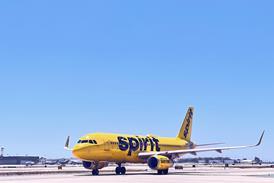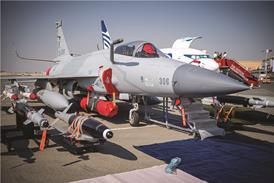Graham Warwick/WASHINGTON DC
Canada's quest for a new search-and-rescue (SAR) helicopter has attracted the usual bidders - with a twist. One candidate helicopter used to be operated by Canada, until all examples were sold; two were considered in a previous competition, but rejected; and one was ordered by Canada, only for the order to be cancelled when the present Government came to power.
The chequered history of Canada's search for new helicopters may serve to level the playing field for the four competitors. Certainly, the run-up to a September or October selection of a new SAR helicopter has yet to be marked by the political rhetoric, which ultimately doomed Canada's C$5.8 billion ($4.4 billion) programme for 43 EHIndustries EH101s to replace its SAR and shipborne naval helicopters.
The ground rules have changed this time round, and so has the nature of the contest. Now the competition has been split into two parts - one for the 15-aircraft, C$600 million, Canadian SAR Helicopter (CSH) requirement, and another for the 32-aircraft, C$2 billion, Maritime Helicopter Programme (MHP). Canada wants off-the-shelf helicopters, and has relaxed the demanding requirements which drove up the cost of its EH101s.
The CSH contest will be the first to be decided. Four bids are being evaluated: from Boeing, with the CH-47DChinook; Eurocopter, with the AS532 Cougar Mk2; GKNWestland and Agusta, with the Cormorant a commercial version of the EH101 and Sikorsky, with a variant of the UH-60 dubbed the Maplehawk. The winning aircraft will replace the Canadian Forces' 13 Boeing CH-113 Labrador SAR helicopters - and could be in pole position to win the follow-on MHP contest.
A separate evaluation is being conducted of each bidder's proposal for industrial and regional benefits (IRB) - work to be placed across Canada to offset the value of the CSH contract. While the technical evaluation is being conducted by the Canadian Department of National Defence, the IRB offers will be considered by the Canadian Cabinet - introducing the potential for a political dimension to the final decision. As a result, IRB proposals are taking on increasing importance as the date for selection draws near.
Boeing's position in the contest is unusual: it is bidding only for the CSH, and has no interest in the follow-on MHP. It has no Canadian partners other than its own subsidiaries and its bid exceeds the C$600 million target. The Chinook is the largest helicopter in the competition, and Boeing's offer of 140% worth of IRB is the most lucrative for Canada.
CSH Chinooks would be built by Boeing Helicopters and completed by its Arnprior, Ontario, division, which already overhauls Canada's Labradors and would support the new helicopters. Canada previously operated CH-47s, but sold them back to Boeing, which remanufactured the aircraft for the Netherlands.
Offsets would consist mainly of work on Boeing's commercial aircraft. The company already spends C$700 million a year with Canadian firms - C$900 million when McDonnell Douglas contracts are included - but is increasingly frustrated by Canada's failure to buy Boeing.
Eurocopter would place more work with its Canadian subsidiary as part of the 120% IRB guarantee in its CSH bid. Fort Erie, Ontario-based Eurocopter Canada would assemble EC120s, EC135s and AS-350/355s for North America.
The manufacturer has assembled Team Cougar, which includes Canadian companies Conair Aviation, IMPAerospace, SNC-Lavalin and Spar Aviation Services. IMP would complete and support the CSH Cougars and overhaul Eurocopter Dauphins in North America; SNC would provide project management and Spar would manage logistical support and overhaul Cougar and Dauphin dynamic components. Conair's role has yet to be determined.
While Eurocopter's Super Puma was beaten by the EH101 in Canada's original New Shipborne Aircraft (NSA) contest, the firm plans to offer the Cougar derivative for the MHP. Sikorsky, meanwhile, intends to offer its SH-60 Seahawk again, despite losing the NSA contest. This time, the UScompany is offering the larger S-92, now under development, as an option in the CSH and MHP competitions (Flight International, 20-26 August).
Sikorsky says that its CSH bid is well under the target price, despite the development work needed to meet the Canadian requirement with the UH-60, the smallest helicopter in the competition. The manufacturer is offering 150% IRB through Team Maplehawk, which includes CAEAviation (final assembly and logistic-support management), Canadian Marconi and Litton Systems Canada (avionics), and General Electric Canada (engine assembly and support).
Assured of a level playing field, despite Canada's costly cancellation of the original EH101 order, GKN Westland/Agusta's Team Cormorant says that its CSH bid is within the C$600 million target price, while its IRB offer exceeds 100% of the contract price. The team includes Bombardier (logistic-support management), Bristol Aerospace (component manufacture and possible final assembly) and CHC Helicopters (support).
Team Cormorant plans to offer an EH101 variant for the MHP requirement, and points to statements indicating that Canada will use the CSH airframe as the MHP platform if the chosen helicopter has shipborne capability. While this might seem in its favour, Team Cormorant faces the biggest hurdle of all: is Canada's military and political leadership strong enough to put the past behind it?
Source: Flight International























